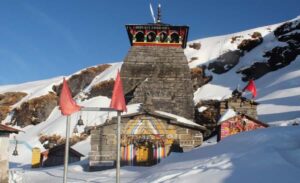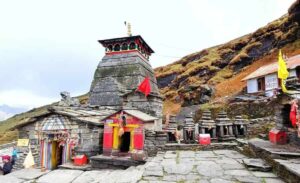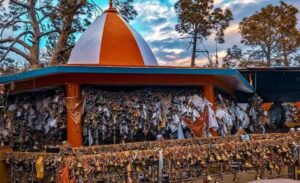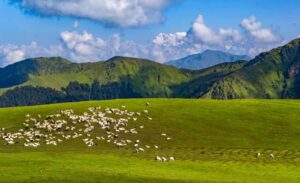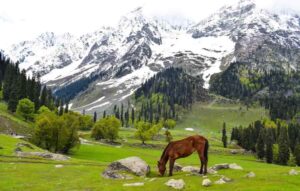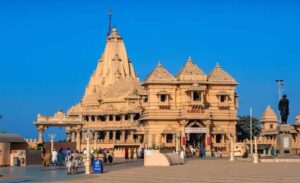Sammed Shikharji Temple: A Pilgrimage to Serenity
Sammed Shikharji Temple, also known as Parasnath Hill, is one of the most revered Jain pilgrimage sites in India. Situated in the state of Jharkhand, this sacred mountain is believed to be the place where twenty of the twenty-four Tirthankaras, spiritual leaders in Jainism, achieved Nirvana (spiritual liberation). With its rich historical significance, stunning architecture, and natural beauty, Sammed Shikharji Temple attracts devotees and tourists alike. In this comprehensive guide, we will delve into the temple’s significance, architecture, history, timings, pujas (rituals), the best time to visit, weather by months, how to reach, accommodation options, travel tips, and frequently asked questions.
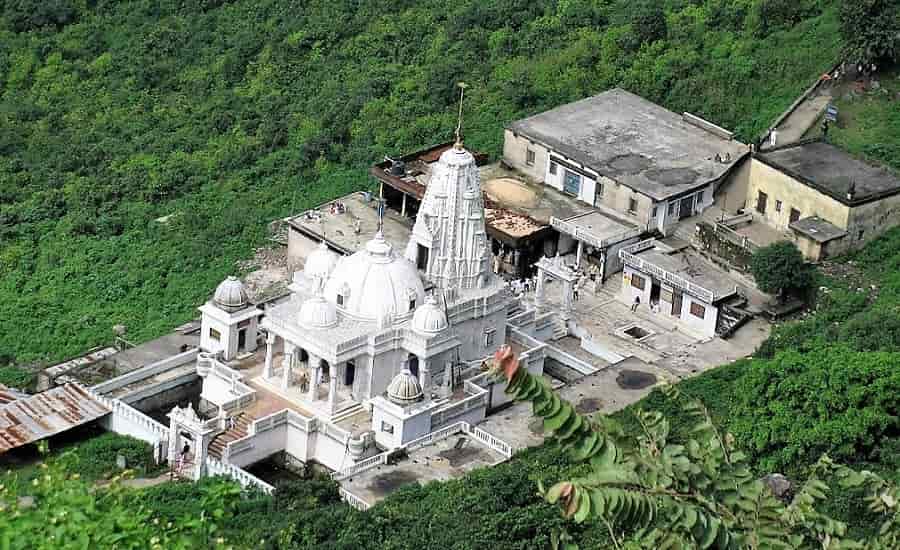
Significance of Sammed Shikharji Temple
- Spiritual Significance: Sammed Shikharji holds immense importance in Jainism. It is believed to be the place where the 20th Tirthankara, Lord Munisuvrata, attained Nirvana. The 22nd and 24th Tirthankaras, Lord Neminatha and Lord Mahavira, also achieved spiritual liberation here. Pilgrims visit to pay homage to these enlightened beings.
- Spiritual Liberation: Jains believe that visiting Sammed Shikharji and undertaking the arduous pilgrimage can lead to spiritual elevation and ultimately, liberation from the cycle of birth and death.
- Natural Beauty: Apart from its religious significance, the temple is nestled amidst lush green forests and scenic landscapes, offering a serene environment for meditation and self-reflection.
Architecture of Sammed Shikharji Temple
The Sammed Shikharji Temple complex boasts impressive architectural elements:
- Main Temples: The temple complex houses several main temples dedicated to different Tirthankaras, including Lord Munisuvrata, Lord Neminatha, and Lord Mahavira. These temples showcase intricate carvings, ornate spires, and beautiful sculptures of Jain deities.
- Gompas: Tibetan-style monasteries or gompas can also be found around the temple complex. These structures exhibit a unique blend of architectural influences, reflecting the diverse cultural and religious elements present in the region.
- Traditional Jain Architecture: The main temples follow traditional Jain temple architecture, characterized by detailed stone carvings, spires, and decorative elements. Jain temples often emphasize simplicity, purity, and symmetry in their design.
- Use of Marble and Granite: The construction of the temple complex includes the use of white marble and granite, which not only adds to the aesthetic appeal but also symbolizes purity and spirituality in Jainism.
- Open Courtyards: Many Jain temples feature open courtyards where devotees can gather, meditate, and participate in religious ceremonies.
History of Sammed Shikharji Temple
The history of Sammed Shikharji Temple is deeply intertwined with Jainism:
- Ancient Origins: The site’s sanctity dates back thousands of years. Jain scriptures and historical records mention its significance as a place of pilgrimage since ancient times.
- Tirthankara Connections: Sammed Shikharji is where several Tirthankaras attained Nirvana, further solidifying its importance in Jainism.
- Renovations: Over the centuries, various rulers and Jain communities have contributed to the construction and renovation of the temple complex, enhancing its architectural beauty.
Timings and Puja at Sammed Shikharji Temple
- Timings: The temple is open to devotees and tourists from sunrise to sunset. It is advisable to check the specific timings before planning your visit, as they may vary.
- Puja: Daily rituals and pujas are performed at the temple, and visitors can participate in these ceremonies to seek blessings. The chanting of Jain mantras and prayers creates a spiritual ambiance.
Best Time to Visit Sammed Shikharji Temple
The ideal time to visit Sammed Shikharji Temple is during the winter months, from November to February. The weather during this period is pleasant, with cool temperatures and minimal rainfall, making it comfortable for pilgrimage and exploration. Summers (March to June) can be scorching, while the monsoon season (July to October) can bring heavy rainfall, making the trek to the hill challenging.
Weather by Months
- November to February: Winter – Pleasant with temperatures ranging from 10°C to 20°C.
- March to June: Summer – Hot and dry, with temperatures soaring above 30°C.
- July to October: Monsoon – Frequent heavy rainfall, which can make the trek difficult and risky.
How to Reach Sammed Shikharji Temple
Reaching Sammed Shikharji Temple involves a combination of road and trekking:
- By Air: The nearest major airport is Ranchi Airport, approximately 150 kilometers away. From there, you can hire a taxi or take a bus to reach the base of Parasnath Hill.
- By Train: The nearest railway station is Parasnath Railway Station, located at the base of the hill. Trains from major cities like Kolkata and Delhi connect to this station.
- By Road: You can reach the base of Parasnath Hill by road from nearby towns and cities. Regular bus services are available. From the base, the pilgrimage involves a challenging trek to the summit, which is approximately 2.5 kilometers.
- Trekking: Pilgrims can undertake a trek to the summit. It’s advisable to start early in the morning to avoid the midday heat. The trek takes about 2-3 hours, depending on your pace and fitness level.
Accommodation
- Dharamshalas: There are several dharamshalas (pilgrim guesthouses) at the base of the hill and around the temple complex, offering budget-friendly accommodation options for pilgrims.
- Hotels: For more comfortable stays, you can find hotels in nearby towns like Giridih and Madhupur, which are within a reasonable distance from the temple.
- Camping: Some adventurous visitors opt for camping on the hill itself, but this requires prior permission and appropriate gear.
Nearby Sightseeing Places
Shikharji Hill Summit
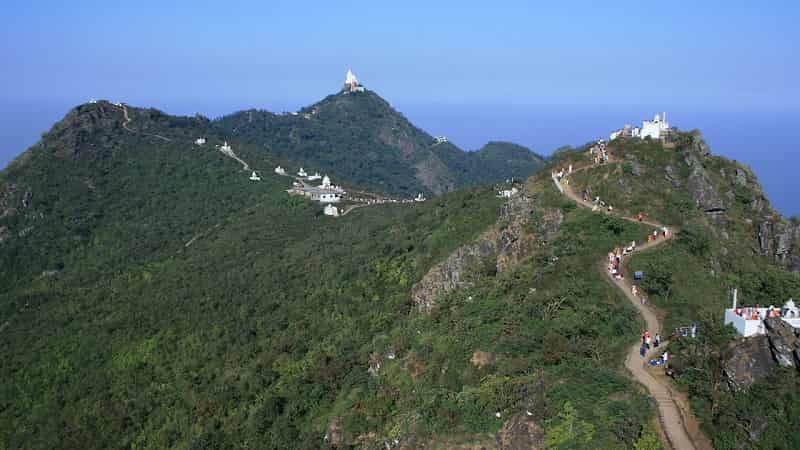
The trek to the summit of Parasnath Hill is a spiritual journey in itself. Along the way, you’ll come across various sacred spots, ancient temples, and scenic viewpoints. The summit offers breathtaking views of the surrounding landscape.
Shri Digamber Jain Siddha Kshetra
This is the main temple complex at Sammed Shikharji, where you can visit the temples dedicated to Lord Munisuvrata, Lord Neminatha, and Lord Mahavira. The intricate architecture and spiritual ambiance make it a significant attraction.
57 Feet High Statue of Lord Rishabhanatha
The colossal statue of Lord Rishabhanatha, the first Tirthankara, is a must-visit. It’s not only a religious symbol but also a remarkable piece of art that offers panoramic views of the surrounding area.
Samosharan Temple
Located at the base of the hill, this temple is dedicated to Lord Parshvanatha, the 23rd Tirthankara. It’s a significant pilgrimage spot for Jains.
Maraska Temple
This temple is dedicated to Lord Parshvanatha and is believed to be the spot where Lord Mahavira attained Kevala Jnana (omniscience). It’s a place of deep reverence for Jain devotees.
Kundalpur
About 8 kilometers from Sammed Shikharji, Kundalpur is believed to be the birthplace of Lord Mahavira. You can visit the Digambar Jain temple and the Bhagwan Mahavira Museum here.
Madhuban
This tranquil forested area near Sammed Shikharji is known for its natural beauty and is often used by pilgrims for meditation and self-reflection.
Parasnath Wildlife Sanctuary
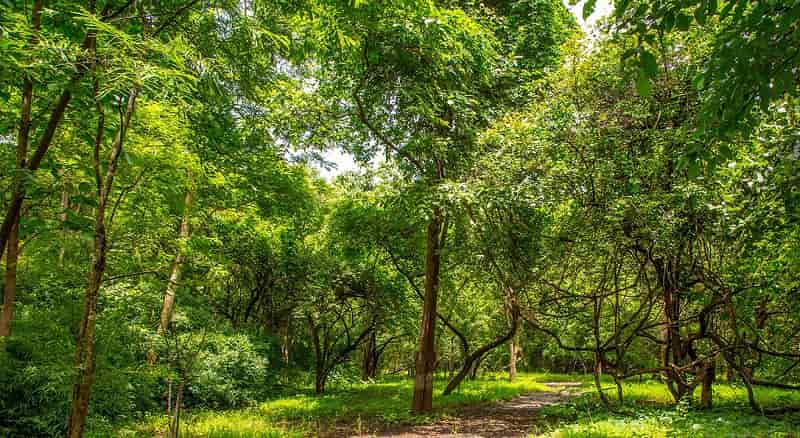
The sanctuary surrounding Sammed Shikharji is home to diverse flora and fauna. Nature enthusiasts can spot various species of birds, animals, and plants while trekking.
Pandav Cave
These ancient caves are associated with the Mahabharata and are believed to have been used by the Pandava brothers during their exile. They offer a glimpse into the region’s historical significance.
Chandra Prabhu Swami Temple
This temple, dedicated to Lord Chandra Prabhu, is located near Madhuban and is another important Jain pilgrimage site.
Sun Temple, Deoghar
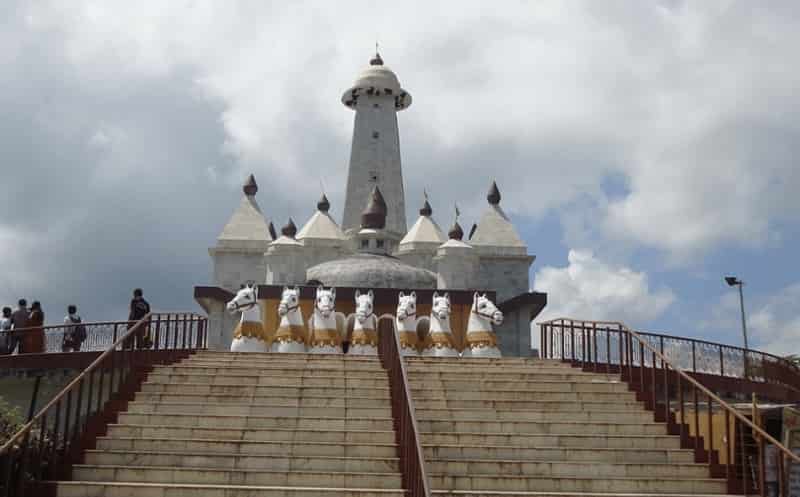
While not within the Sammed Shikharji complex, the Sun Temple in Deoghar is a nearby attraction known for its architectural beauty and historical importance.
Travel Tips
- Physical Fitness: The trek to the summit can be physically demanding. Ensure you are in good health and wear comfortable clothing and footwear.
- Permits: If you plan to camp on the hill, obtain the necessary permits and permissions in advance.
- Weather Awareness: Check the weather forecast before embarking on the pilgrimage and plan accordingly.
- Respect Local Customs: Be respectful of the temple’s rules and customs, such as removing shoes before entering and maintaining silence.
FAQs (Frequently Asked Questions)
1. Is there an entry fee to visit Sammed Shikharji Temple?
There is usually no entry fee for the temple complex, but donations for maintenance and rituals are encouraged.
2. Can I visit Sammed Shikharji Temple throughout the year?
While the temple is open year-round, the best time to visit is during the winter months (November to February) due to pleasant weather conditions.
3. Is it necessary to trek to the summit, or are there other ways to reach the temple?
The trek to the summit is the most common way to reach the temple. However, there is also a ropeway available for those who may find the trek challenging.
4. Are there any restrictions on photography within the temple complex?
Photography restrictions may vary, so it’s best to inquire locally about photography rules. Generally, it’s respectful to ask for permission before taking photos.
5. Can non-Jain visitors visit Sammed Shikharji Temple?
Yes, the temple is open to people of all faiths. Visitors are expected to show respect for the religious significance of the site.
6-How much does it cost to hire a doli for Sammed Shikharji Temple?
The cost of hiring a doli is typically set by the Dharamshalas. The doli rental fee is INR 5,200, with an additional charge of INR 200 for food.
Also Read:

